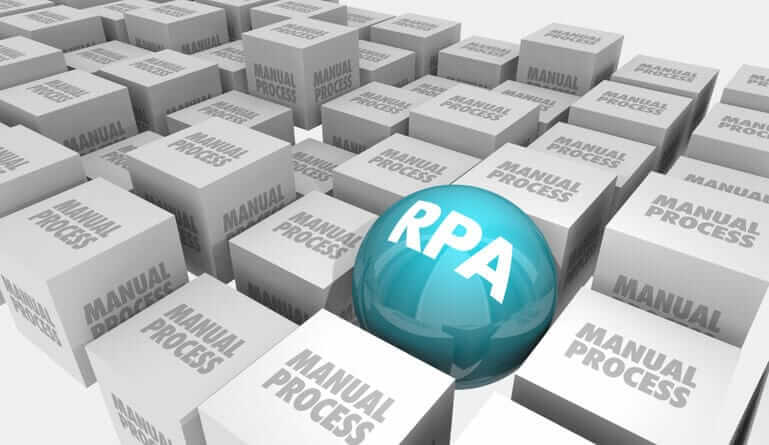Robotic Process Automation is becoming a popular topic, especially since it helps companies and businesses in many different ways, including by removing tedious tasks from employees.
What is Robotic Process Automation?
Robotic process automation – RPA – is a system that learns small tedious tasks to complete in the graphical user interface – or GUI – by watching a user perform the task. After that, the RPA robots(1) can continue the tasks while the employee can start on other projects that they didn’t have time for before.
Top 25 RPA Benefits
1. Lower Costs for Automated Work
Automated work can not only get tasks faster, but they can also get tasks done at a lower cost. This helps you get more tasks done for a much lower rate.
2. Employees Have More Time
Repetitive and tedious tasks can slow down your employees, grabbing their time away from more significant tasks. However, with this RPA benefits, your employees will have more time on their hands to complete those other tasks.
3. Increased Employee Investment
With more time on their hands and away from those tedious tasks, your employees can invest themselves more in their work and feel as if they’re doing more for the company.
4. Decreased Amount of Errors
Humans will inevitably leave some type of error; that’s just humans being humans. But the RPA runs with little to no errors, which lowers operational risk.
5. Decreased Variability in Output
Unlike robots, humans cannot do every task the same for hours. But with the benefits of RPA, however, it can duplicate tasks at a constant rate with little to no ways of being distinguishable from the last.
6. Decreased Paper Use and Waste
Some RPA complete tasks that humans used to fill out on paper. But now, with this benefits of Robotic Process Automation, those same tasks can be completed electronically.
7. Improving and Simplifying Processes
The RPA can also find ways to simplify processes when they are automated if possible. This could help create better practicable processes.
(Also Read: What is Robotic Process Automation?)
8. Increasing Output Numbers
Since RPA does not need a timecard to clock out with, the automation processes can work 24/7 without stopping. This helps companies provide a higher level of service.
9. Increasing Analytic Knowledge
The RPA is meticulous, which helps companies have more valuable analytical data and fewer risks of any leakages. The robots can also help collect data that humans could not possibly get, opening up a wider range of critical information for companies to have.
10. Increasing the Speed and Quantity of Work
Since RPA can work 24/7, customers can get service at any time for many tasks including processing a credit check and completing a payment.
11. Improving Customer Service
RPA helps employees give more time to other, more important tasks like customer service.
12. Improving Internal Services
Tasks, such as internal reports, can be completed faster without any mistakes, so tasks inside the company, like setting up a new employee, can be done faster.
13. Defining Governance Structures
RPA forces organizations to come to an agreement about who owns each application, which helps define governance structures. This allows the robots to have the same access to every application as a human does.
14. Keeping the Same IT System
The benefits of RPA does not require you to replace your existing IT systems. Instead, it can use your existing systems just as an employee could.
15. Scaling RPA For the Better
Since the RPA is scalable, companies can scale down or upon their operations to ensure that their company can make an adjustment as needed.
16. Creating More Secure Workplaces
RPA can work for the companies as long as they are needed since they do not need to ever go home, change jobs, or retire. They also do not hack or damage the companies’ data.
17. Increasing in Amount of Employee Focus
RPA benefits any company, IT included, the focus is critical. Having less tedious work to do allows IT workers to focus on more important tasks at hand.
18. Increasing Analysis and Core Domains
Since RPA is doing tedious work, more employees can focus on other tasks, such as creating more sophisticated analysis and core domains. They can develop work areas that they never had the time to before.
19. Decreasing Customer Pain Points
Since the RPA produces little to no errors, customer pain points will dramatically decrease. Customers will be able to have fewer problems with each company since robots get more work done in a timely manner.
20. Changing for The Better Fast
Companies who use RPA can see benefits from having robots in weeks, if not days. RPA robots can be a quick solution.
21. Improving SLA Analytics
RPA can let the company know about the Service Level Agreement (SLA) analysis in real-time, which helps the companies understand how their company is improving or not.
22. Performing at A High Standard
RPA robots make logical decisions that are designed by the best small and medium-sized enterprises (SME). The SMEs can help the RPA find the best practices that will ensure that the company’s RPA workforce is performing at a high standard.
23. Keeping Better Records
The RPA robots automatically document everything they have done, which gives the company a clear audit and a way to easily recover if an unexpected shutdown was to occur.
24. Becoming an Innovator
Some people believe that in the future, the workforce will consist of robots and humans working together to produce the best content. Nothing will fully be automated. By joining the new cutting-edge technology, known as the RPA, companies are becoming more innovated.
25. Creating Revolutionary Ideas
The RPA is helping humans have time to generate new, revolutionary ideas to help transcend into the next level of company service and products.
Challenges of RPA
1. Resistance from Employees
New technology changes can be stressful for employees for many different reasons, including the fact that their current roles and responsibilities may shift. Making sure that employees are kept up to date on the whole RPA process will help the transformation process become smoother.
2. Deciding Which Process Is the Best
Companies have different processes, including repetitive ones or more complex activity-based ones where the RPA would interact directly with customers. It’s critical for companies to decide which work processes they have are appropriate for their RPA, so everything can run effortlessly.
3. Understanding RPA Limits
Companies, upfront, need to realize and understand the limits of what any RPA can and cannot do. Some tasks are not meant to be automated as much as the companies desire them to be. Set realistic goals and continue discussions about expected results from the RPA company-wide.
Robotic Process Automation Tools
With the rise of RPA, there are many robotic process automation tools. Here’s a list of the top five tools to consider for 2020:
- Another Monday
- LINX
- Win Automation
- Help Systems
- Automai
(Also Read: Robotic Process Automation Tools for CIOs)
Final Thoughts
RPA is something that every company, especially IT, should consider bringing onto their team. Despite the cons, the RPA has many pros that can help a company in expediential ways.





